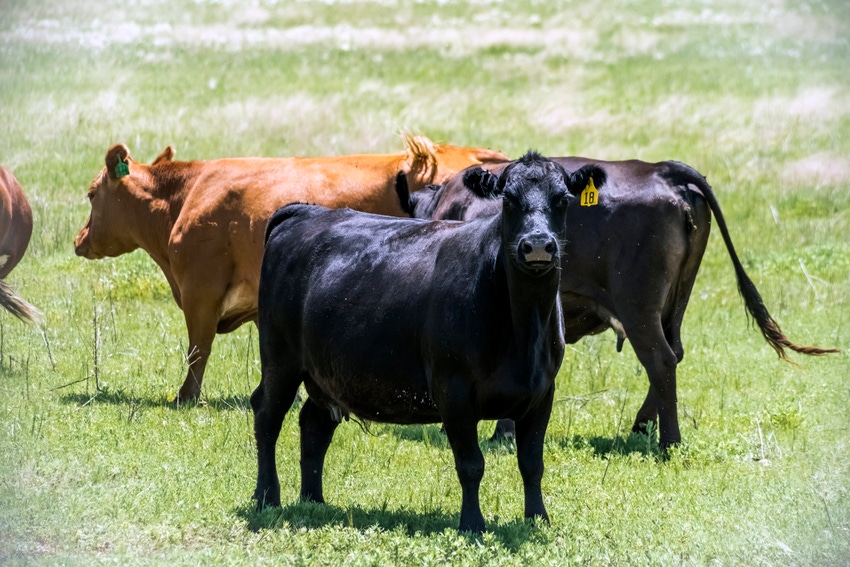Fuller picture is emerging of environmental footprint of U.S. beef industry.
March 11, 2019

The environmental footprint of beef production has become better understood with the publication of key parts of a U.S. Department of Agriculture-led study that made baseline measures of the diverse beef production practices in the U.S.
According to an announcement from USDA's Agricultural Research Service (ARS), the research team completed a comprehensive life-cycle analysis quantifying the resource use and various environmental emissions of beef cattle production in the U.S.
The aim in establishing these baseline measures is that the U.S. beef industry can explore ways of reducing its environmental footprint and improve sustainability, ARS said.
"The environmental footprint of producing beef has long been debated. One challenge is that the impacts extend beyond just those associated with growing the animals and include the impact of producing feed and other inputs. This is further complicated by the diversity of ways that beef cattle are managed and fed," said Marlen Eve, ARS deputy administrator for natural resources and sustainable agricultural systems. "It is important to have an accurate quantification of these impacts to provide a baseline against which production system sustainability can be assessed and improved."
Led by ARS agricultural engineer Alan Rotz, the team's analysis encompassed an array of different types of cattle operations, reflecting a beef supply chain that's among the most complex food production systems in the world.
Indeed, the scope of the analysis spanned five years and seven cattle-producing regions and used data from 2,270 survey responses and site visits nationwide to ensure that the results weren't limited to a single region, since climate, soil, production practices and other factors can differ in different parts of the country, added Rotz, with the ARS Pasture Systems & Watershed Management Research Unit in University Park, Pa.
His collaborators are former ARS research associate Senorpe Asem-Hiablie, Greg Thoma of the University of Arkansas-Fayetteville and Sara Place with the National Cattlemen's Beef Assn., which is partially funding the study.
The team began its beef life-cycle analysis in 2013 and published the first of two sets of results in the January 2019 issue of the journal Agricultural Systems.
According to ARS, the recent results include:
* The seven regions' combined beef cattle production accounted for 3.3% of all U.S. greenhouse gas emissions (GHG) emissions. (By comparison, transportation and electricity generation together made up 56% of the GHG total in 2016, and agriculture in general made up 9%).
* Fossil energy (for example, fuel) use in cattle production accounted for less than 1% of the total consumed nationally.
* Cattle only consumed 2.6 lb. of grain per pound of beef cut weight (or butchered carcass weight), which was comparable to pork and poultry.
* Beef operations in the Northwest and southern Plains had the highest total water use (60% combined) of the seven regions analyzed. Irrigating crops to produce feed for cattle accounted for 96% of total water use across all the regions.
"We found that the greenhouse gas emissions in our analysis were not all that different from what other credible studies had shown and were not a significant contributor to long-term global warming," Rotz said.
Two areas for potential improvement are water use and reactive nitrogen losses, ARS said, explaining that water use is increased in the West, where U.S. beef cattle are concentrated. Reactive nitrogen losses (at 1.4 teragrams, or 15% of the U.S. total) mainly in the form of ammonia can lead to smog, acid rain and algal blooms, for example, and potentially pose a public health concern, ARS added.
Using the "Integrated Farm System Model" (IFSM), Rotz and his team also estimated net releases of reactive forms of nitrogen such as ammonia from manure and urine as well as the three major GHGs: methane, carbon dioxide and nitrous oxide. The gases are so named for their tendency to trap heat in the atmosphere and contribute to the warming of the Earth's surface, extreme weather patterns and other global climate change events.
In the next six months, the team will combine the results of its IFSM analysis with post-harvest data from other sectors of the beef supply chain — namely, processing, packing, distribution, retail, consumption and waste handling. That phase will be accomplished using the open-source life-cycle assessment program "OpenLCA."
Together, these data will be used to generate a national assessment of the beef industry's resource use, economics and net losses of GHGs and other emissions, providing a critical tool for sustainably producing beef as an important source of lean protein and nutrients, ARS said.
Source: Agricultural Research Service, which is solely responsible for the information provided and is wholly owned by the source. Informa Business Media and all its subsidiaries are not responsible for any of the content contained in this information asset.
You May Also Like


.png?width=300&auto=webp&quality=80&disable=upscale)
